Should Malaysians worry about an Ebola outbreak? [UPDATED!]
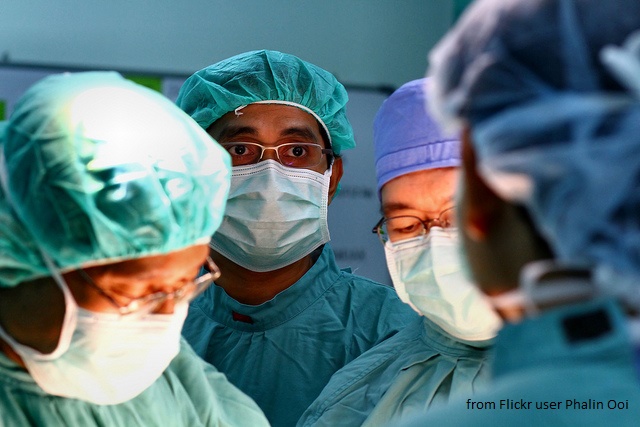
- 3.0KShares
- Facebook3.0K
- Email1
*Click here for updates on the Malaysian patient and more (it’s all the way to the end)*
There’s been over 820 deaths and 1,440 reported Ebola cases since March. It spreads like a cold and it has a shocking fatality rate of 60% – 90% . There is NO CURE and the dying process is horrifically gory and painful.
So why aren’t Malaysians talking about this yet?
In a quick survey we found that 8 out of 10 people briefly knew about the virus, out of which 6 didn’t know that it was deadly. Most of them also thought that it was yet another African virus without any implications to them, until we explained the severity of this deadly virus.
Now, CILISOS usually prides itself in being a balanced voice, but in the case of this virus, we feel that this NEEDS to be SCARY AS HECK so that people can be as careful as humanly possible about not getting or spreading it.
We are all connected in today's world. An outbreak anywhere is a risk everywhere.
— Dr. Robert R. Redfield (@CDCDirector) August 4, 2014
Let’s take the average fatality rate of 75% and amplify it according to the world population of 7 billion people. What do you get? – 5,250,000,000 humans, or rather, 3/4 of the world population, perished.
Sound a bit Michael Bay? Well, the good news is that it shouldn’t happen because people are starting to gain awareness of the subject. The fatality percentage should significantly decrease, assuming that governments and the general public take necessary preventive measures, of course.
But if we don’t start bucking up, this Ebola outbreak can easily turn into the deadliest epidemic of our time. How, you ask?
1. It’s so easy to get infected, you wouldn’t even notice it.
Say you got infected when a virus carrier sneezed on your hand, unknowing to the both of you. You then rub the excess Hokkien Mee gravy off your mouth with that same hand. There’s a high chance you’ve just been infected.
It spreads through blood, sweat, saliva, semen and stool – which is pretty much everything. There’s an argument as to whether the virus is airborne or not – researchers have claimed that the virus is not as infectious as it seem, but even that there’s an argument about it scares us.
Once you’ve got it, you might not be able to tell immediately. With an incubation period of 2 – 21 days, you could be doing your usual stuff – hanging out, partying, romancing, sneezing on other people – without knowing that you’ve got a virus in you. Here’s what to expect when the signs and symptoms start appearing:
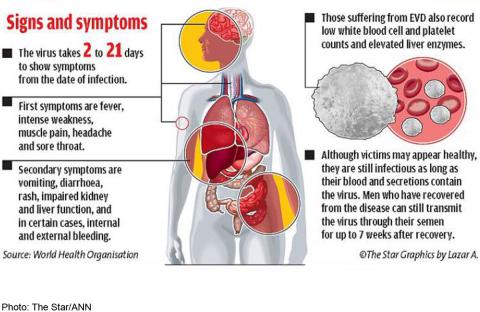
Fast and deadly. Photo from thestar.com.my
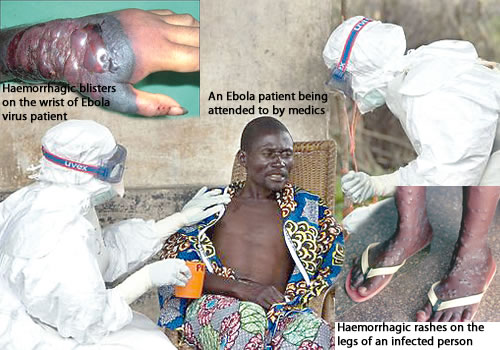
Treating patients with Ebola requires much preventive care. Photo from tribune.com.ng
Point to note: Even if a person seems fine and dandy, they’re still infectious as long as their blood and secretions contain the virus. In fact, the virus was found to be active in a 61-day old semen.
Read that again.
Active in a 61-DAY OLD SEMEN?! This virus is INSANE. Unlike STDs and minor diseases, this virus is evidently strong, surviving outside its host for a long time, too. Here’s an excerpt of something that happened in Liberia via Reuters.
The woman’s sister cared for her, and in doing so contracted the Ebola virus herself before her sibling died of the haemorrhagic fever it causes.
Feeling unwell and fearing a similar fate, the sister wanted to see her husband – an internal migrant worker then employed on the other side of Liberia at the Firestone rubber plantation.
She took a communal taxi via Liberia’s capital Monrovia, exposing five other people to the virus who later contracted and died of the Ebola. In Monrovia, she switched to a motorcycle, riding pillion with a young man who agreed to take her to the plantation and whom health authorities were subsequently desperate to trace. – Reuters
Scared yet?
2. Traditional burials and superstition are making it worse.
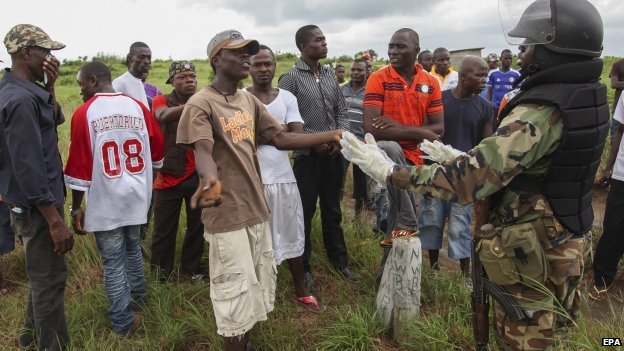
Families and friends of victims are not happy with the idea of cremation. Photo from BBC News
The virus, which is currently contained in West Africa, has affected people from rural and city areas. In a place where traditional cultures are prevalent, there are many misconceptions towards the virus which has led to lack of cooperation from victims, their friends and families.
Liberian officials have ordered all corpses to be cremated as they can still infect others, but families are refusing to obey, insisting on traditional burials which have been causing others to fall ill.
Also, in an AMA Reddit (Ask Me Anything) thread by Stephen Morse, Professor of Epidemiology at Columbia University’s Mailman School of Public Health, it was revealed that many West Africans have many misconceptions of the virus, such as:
- It’s some sort of witchcraft
- Healthcare workers are secretly spreading the disease
- People are ashamed to have a family member with Ebola, so they avoid getting the right care to help save their lives. With that, they manage the patient and/or deceased without proper precaution or knoweldge
- It’s worse in the hospital.
As people take matters into their own hands, there’s no wondering why the virus is spreading far quicker than the efforts made to contain the disease, which brings us to the next point…
3. It was limited to Africa, but not anymore
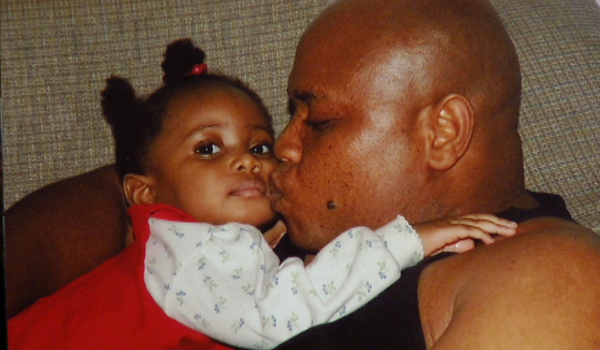
Patrick Sawyer in an undated photo with his daughter. Photo via theepochtimes.com
Patrick Sawyer, a Liberian businessman, was the first reported case of this current outbreak. Sawyer collapsed after he got off a plane to Nigeria and authorities took him into isolation, but they did not quarantine all the other passengers on board the flight. Remember what we said about how easy it is to spread?
Now imagine a sick guy, stumbling around a moving plane, stabling himself by holding on to passenger seats or even a food tray. Now imagine 10 of those people on the plane become the sick guy on 10 other flights around the world, and 100 flights, and 1000 flights and so on…
As for Sawyer, he just happened to land in Lagos, Africa’s most populous city, which explains why health workers are scrambling to trace those who may have been exposed to him across West Africa, including flight attendants and fellow passengers.
Do keep in mind that Malaysia has a significant number of people flying in from the region (enough to justify its own Wikipedia entry), mostly students, so we are at higher risk than many other countries.
The virus has travelled from Guinea to Sierra Leone, Liberia and Nigeria, infecting more than 1,440 people and killing 820 of them along the way. And just yesterday, two Ebola-infected US citizens helping out in West African west camps were flown to Atlanta for intensive treatment. The patients, Dr Kent Brantly and Nancy Writebol, contracted the virus while working at a Liberian hospital. They were flown in with full protection using the Aeromedical Biological Containment System which is designed to house a single patient and stop any infectious germs from escaping. The superpower’s decision to bring the two patients back has been met with mixed reactions, but reports say that Dr Kent Brantly, the first patient to arrive, is seeing physical improvements.
4. There is no cure

A warning sign in an affected city. Photo from cdc.gov
This is the worst part. There is no licensed vaccine for Ebola. While several vaccines are being tested, the WHO says that none are available for clinical use. What’s being done to treat these victims are oral rehydration solutions (containing electrolytes) and/or IV fluids. While there is no specific treatment is available, new drug therapies are being evaluated.
But a Canadian pharmaceutical company called Tekmira has been working on the ‘TKM-Ebola’ treatment (according to a report by VOX), ‘one of the most advanced attempts’ at a drug that could potential protect against and treat the disease.
So where’s this treatment and why aren’t people using it?
TKM-Ebola was well into Phase 1 trials with the Food & Drug Administration (FDA), but the FDA put the trials on hold at the start of July. They requested for more information about how the drug actually works before the company could give trial subjects larger dosages. So, for the past month, the TKM-Ebola trial has been put on hold while the company gathers all required information.
In other good news, TKM-Ebola may not be the only hope, either. There’s another Ebola vaccine on FDA’s list scheduled for trials in human subjects come September 2014. It’s still in an early stage and lots of research and development is required.
So what’s happening in Malaysia?
Locally, main entry points have been on an Ebola virus alert. Health Minister Datuk Seri Dr S. Subramaniam said that preventive measures, which includes identifying and handling passengers with symptoms, are being taken by officers at major entry points like KLIA. He also mentioned that the Health Ministry will be working closely with the Education Ministry, advising and screening students returning from West African countries.
The Union of Employees of Port Ancillary Services Suppliers has also urged port health officials to conduct thorough checkups on crew members aboard ships that sailed from Ebola-hit countries. That aside, Dr Subramaniam has also said that governmental hospitals nationwide were equipped with facilities to treat Ebola patients, should there be any in the first place. Doubtful? Let’s just hope we never get to try.
Ok I’m scared la. Now what?
While the bigger responsibilities lie with governments across the globe, it’s nice to know we can depend on the stuff we’ve already learnt from SARS and H1N1 – Hand Sanitizer and masks mostly. Aside from that…
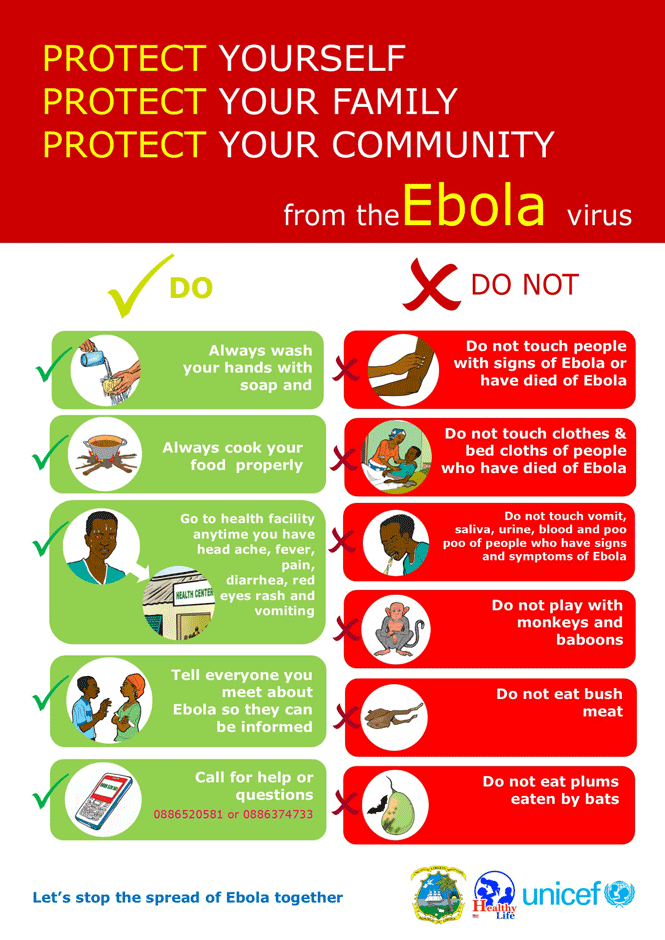
A poster currently being circulated in Africa. Photo by Unicef
For a local contact, if you know someone who’s exhibiting worrying symptoms, isolate them immediately (masks, keep them in an isolated room) and contact the Malaysian Health Department’s Crisis Response Center. DO NOT GO OUT. Let them come to you.
So in case you haven’t figured it out…the answer to the article title is…
YES. PLEASE WORRY. A million times yes. Each and every Malaysian should care about the Ebola outbreak and furnish themselves with basic knowledge and sanitary equipment to defend their lives and the people around them.
The scariest part of this whole news bit is that an infected person has been on a plane. This means Ebola went thru an airport. Already there have been scares in the UK, Hong Kong and the Phillippines. Thankfully, they all turned out false, but that lets you know how easily things can spiral out of control.
At CILISOS, we’re not ones to encourage irrational fears, or excessive precautions – but this is one case where the consequences are excessive enough to justify these fears. If ONE case arrives in Malaysia, it could mean the end of life as we know it. That’s not an understatement – so please… please. Be worried and careful.
And when can I stop being scared?
As stated above, the incubation period of the virus is 2-21 days. Patrick Sawyer touched down on July 20th at the Lagos airport. So by that rationale, on the 9th or 10th of August (this weekend), if you don’t see any other outbreaks, it means that miraculously, no one else in the airport or plane carried the infection internationally – which means you’re relatively safe.
Until then, let’s unite in hope for the ravaged West African region and hope that for the rest of us relatively fortunate people around the globe, the worst of this terrible pandemic has already passed.
Update #1, 7.8.14: The CDC has just moved to Level 1 alert for the Ebola Virus, which is it’s highest level of alert.
Update #2, 13.8.14: The danger period for an escaped infection is effectively OVER.
With the world watching closely, chances of an infection are reduced (many airlines have stopped flights to the region). With the body count piling, even entire villages have been cordoned off in West Africa.
Do keep up with the latest news here, and be wary if another international case breaks out. But for now at least, we’re safe. For another illness that’s already killed hundreds of Malaysians, click here.
*Update #3, 15.9.2014: We’ve just gotten news about a suspected infection in Sarawak.
The Malay Mail Online reports that Datuk Dr Zulkifli Jantan, the state health director confirmed today that the patient, believed to be an African male, is suffering from a fever and is currently placed under investigation. No further details were disclosed. He is the second suspected Ebola case, with the first one in Perak which was then proved negative.
But to be fair, suspected Ebola cases are popping up everywhere in the world and almost all of them have been proven negative. Like in China, Sweden, Singapore, Spain, Italy, Australia, Austria, Russia… With the current death rate of at least 2,097 deaths out of 3,944 cases, it’s better to be safe than sorry.
On a positive note, the two infected American doctors who were flown in from Liberia have recovered and are now Ebola-free. Woohoo!

Dr. Kent Brantly and his wife. He was one of the two doctors who were infected in Liberia. Look how healthy he looks now! Image from Time
With proper quarantining and help, it was a lot easier for them to bounce back as compared to patients in West Africa, who had to be quarantined in a group due to lack of space. Now, let’s just hope that IF the patient in Sarawak is tested positive for the killer virus, we’d be able to save him and control the sitch in time.
- 3.0KShares
- Facebook3.0K
- Email1







Pingback: First Ebola now MERS?! Should Malaysians worry about an outbreak? | CILISOS - Current Issues Tambah Pedas!
Pingback: A to Z Suggestions on Google Malaysia Reveal The Malaysian Psyche [PART 1] | CILISOS - Current Issues Tambah Pedas!
Pingback: The real effect of Malaysia’s 2nd Ebola scare | CILISOS - Current Issues Tambah Pedas!
Pingback: 60,000 Malaysians Infected, Not Enough Papaya Leaf: Top Dengue Myths Debunked. | CILISOS - Current Issues Tambah Pedas!
Pingback: Should Malaysians be worried about Ebola ? | actuallyanything.com